Timeless Marvels: 35+ Impressive Discoveries That Have Stood The Test Of Time
Our world is filled with wonders and treasures beyond measure, each one rich in the cultures that shaped and birthed it and aged by the histories that unfolded around it over the ages.
Though not all of these creations and relics from a time far gone have survived into the present era, many have survived, some more intact than others, yet none are rendered any less precious because of it. We consider that a blessing, as it allows us to peer into the past, even if it’s just for a moment.
Today’s exciting adventure is courtesy of the Facebook group ‘Archaeology & Ancient History.’ It consists of about 80,000 members who all share a passion for sharing and learning about ancient discoveries that have survived through the years. So, join us as we look deeper at some of the best ancient wonders members have shared.
Over a Thousand Stone Sculptures
Our first entry takes us to the island nation of Japan and the prefecture of Kyoto. Hidden deep in the forested hills of Kyoto’s Arashiyama district lies the old Otagi Nenbutsu-ji temple. It was built in the 8th century and later rebuilt in the 13th century.

The temple is arguably most famous for its 1200 rakan stone statues that are found within. The statues represent the many disciples of Budda, many of which were shaped by local residents in the ’20s under the guidance of the sculptor Kocho Nishimura.
Petrified Opal Tree Trunk
As we all know, nature has this uncanny ability to create incredible works of art. Some are intentionally designed as such, while others are formed over time due to unintended events. Such is our next entry, a 225-million-year-old petrified opal tree.
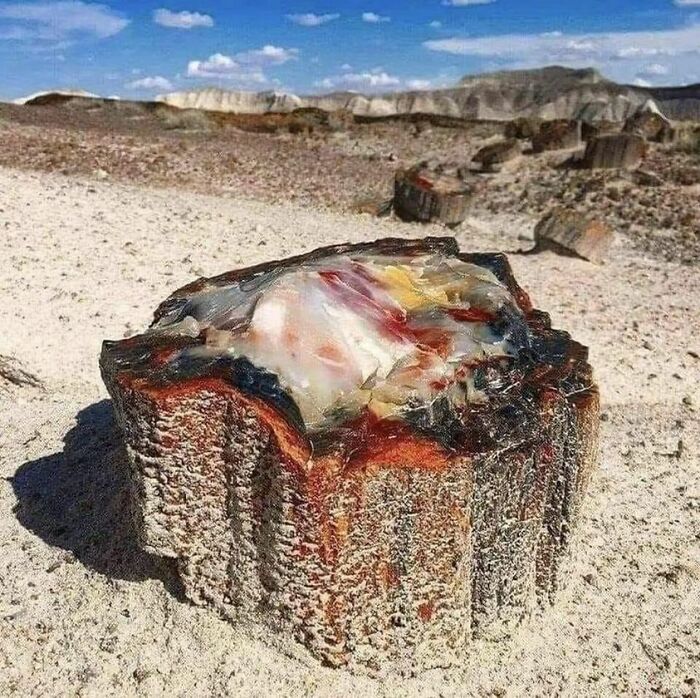
Now, if you aren’t already reeling about how this was made possible, you are probably wondering what an ‘opal tree’ is. Wood opal (if we’re being more accurate), or xylopal, is a piece of wood that becomes petrified and gradually gets replaced by opal.
Castillo de Colomares, Spain
While we alluded to these creations as being ancient, some of them were actually made more recently than you would think. A fine example can be found in the Spanish town of Benalmádena, located in the autonomous community of Andalusia.
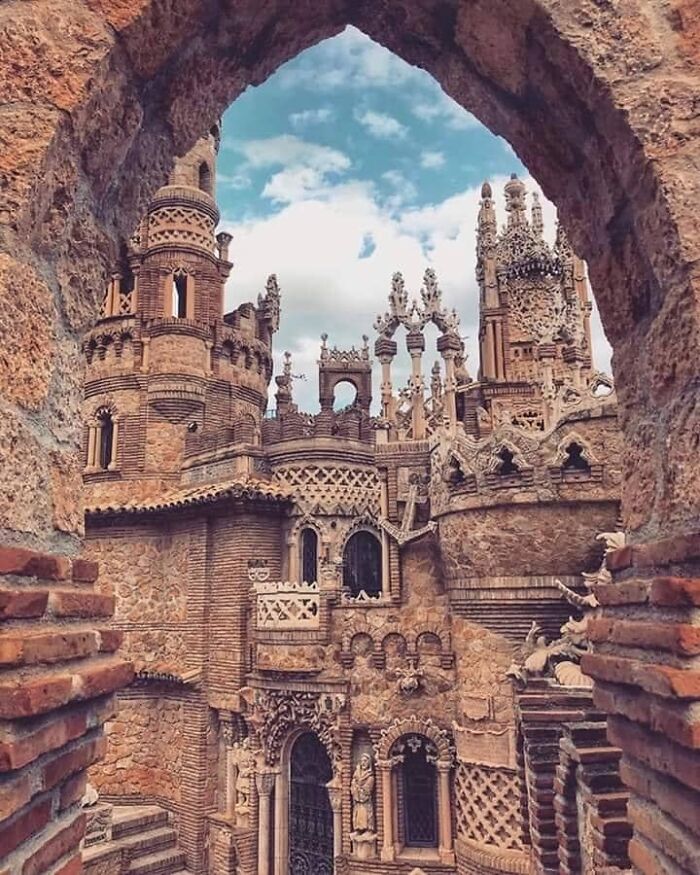
Near the city, you will find the Castillo de Colomares, a monument designed to appear as a castle built between 1987 and 1994. The monument is dedicated to the journey and life of the famous navigator and increasingly controversial explorer Christopher Columbus.
One of the Oldest Bibles on Earth
Our next entry takes us to the landlocked nation of Ethiopia and its district and town of Adwa. Located in the Tigrayan region, the area, and town are known for being the home of several old and important Christian churches.

The one we’re most interested in is the Abba Garima Monastery. This places houses two of the oldest surviving Christian illuminated manuscripts in the world, collectively known as the Garima Gospels. Garima 2, the older of the two Gospel books, roughly dates back to the 5th century.
Largest Intact Mosaic on Earth
Anatolia is the ancient Greek name for ‘the East.’ It also refers to the West Asian peninsula, home to the nation of Turkey. The peninsula is culturally rich beyond measure due to the many kingdoms and battles of its past.
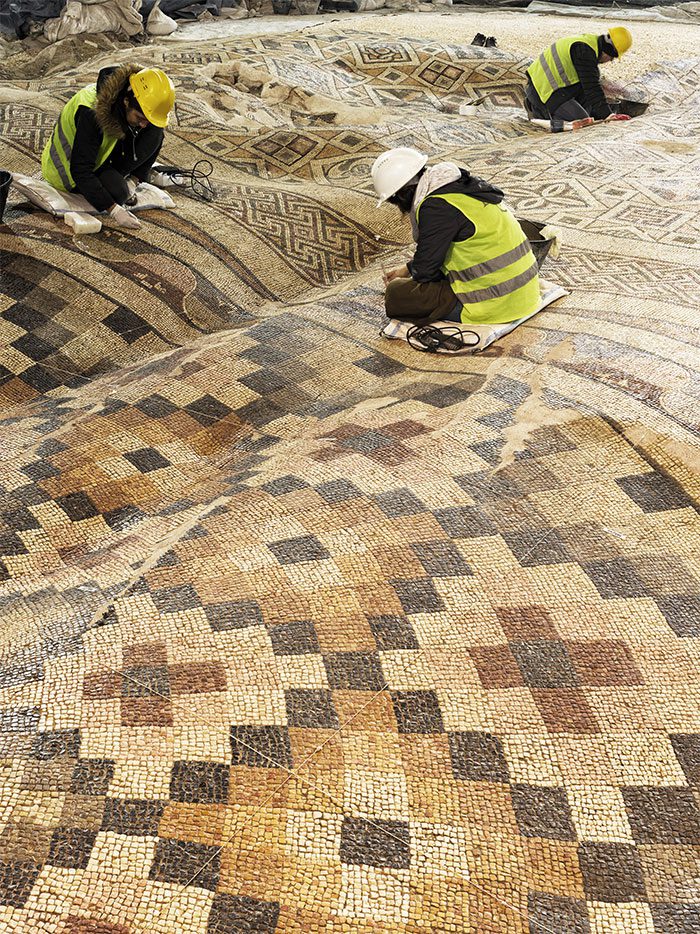
Because of this, the area contains several ancient ruins that date back to the Roman and Greek occupation. The city of Antakya (Antioch) holds one of the largest and most intact mosaics in the world, dating to the 6th century and measuring 1,200 square meters.
The Ruins of Pompeii
Speaking of Roman ruins, few places in the ancient empire are likely as known as the ruined city of Pompeii. Located in the Campania region near the city of Naples, this photo shows the remains of one of the empire’s most important cities.
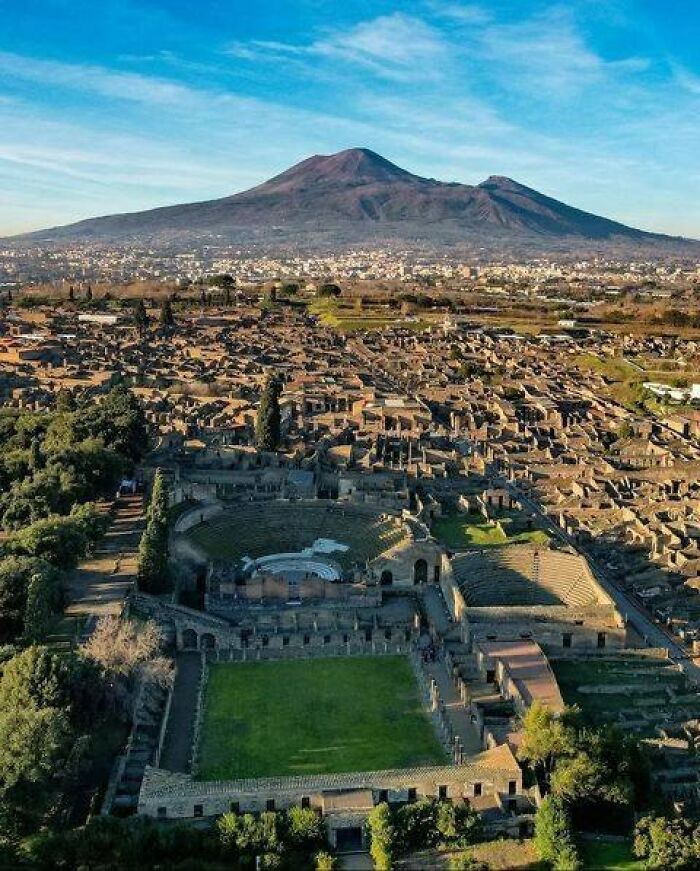
Much of the city was destroyed in 79 BCE when Mount Vesuvius erupted in a natural disaster that lasted for two days. Fortunately, most of the inhabitants were able to escape, but the city was thereafter abandoned. It was only fully excavated in 1748 to reveal this stunning scene.
An Italian Colossus
In the Italian region of Tuscany lies an old sleeping giant hidden in the municipality of Vaglia. Built near the ruined remains of the abandoned 18th Century Villa di Demidoff is the 11-meter-tall stone statue known as the Apennine Colossus.
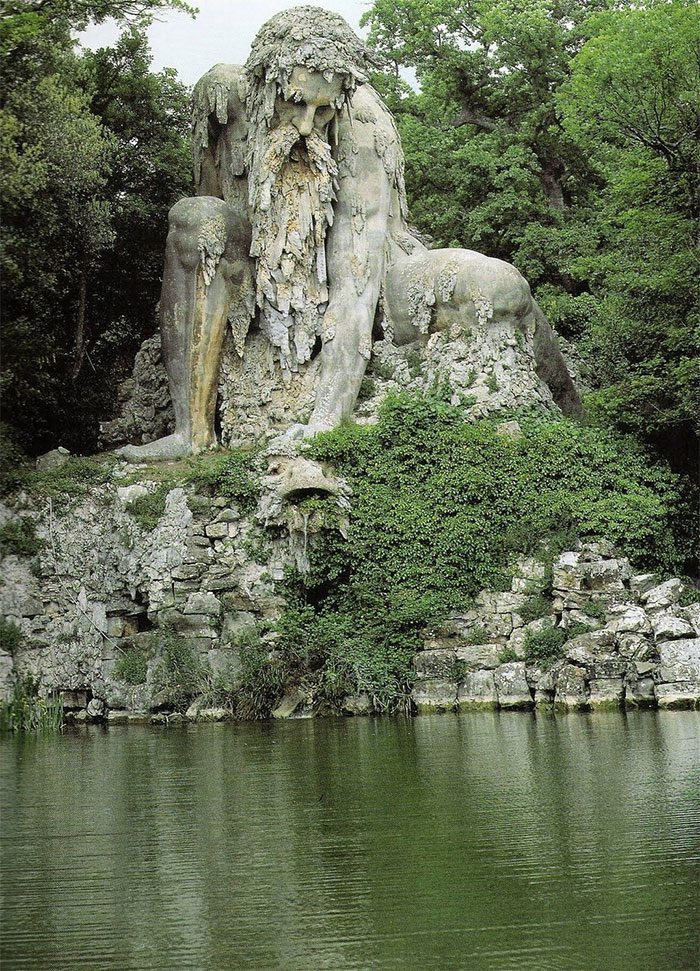
The gigantic statue was created by the sculptor Giambologna, who is also known by his Flemish name Jean de Boulogne. While he may not have been from Italy, he is regarded as the last significant sculptor of the Italian Renaissance school of art.
Ancient Roman Road
While we are still in Italy, let’s take a journey down to central Italy. Located on the outer limits of the eternal city of Rome, you are likely to spot an old and unassuming road that stretches out into the distance.
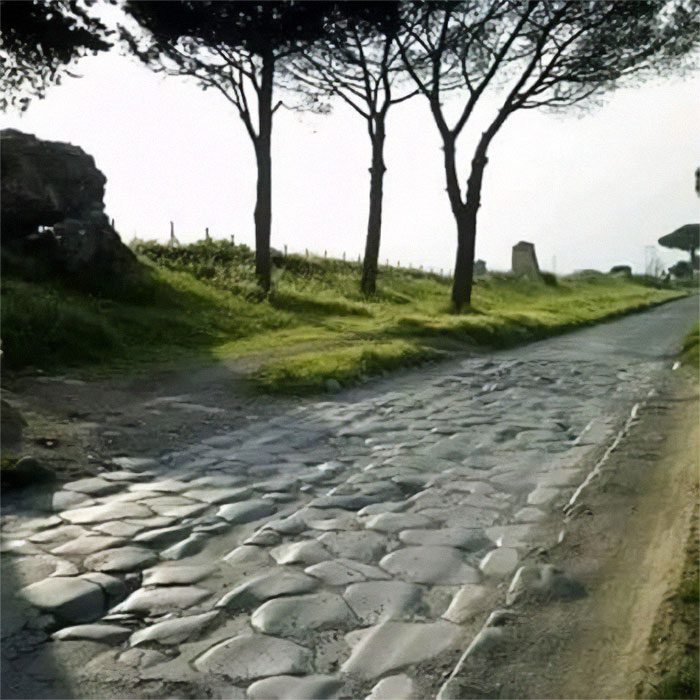
The road we are referring to is called the Appian Way. It’s one of the oldest and most important roads of the ancient Romans and dates back to when Rome was still a republic. The old road connected Rome to the trade city of Brundisium.
Ancient 3000-Year-Old Animal Figurines
Even with the continuous advancement of technology taking over all spheres of our lives, we are sure that every kid loves a good ol’ toy. Which makes you wonder, how far back does the concept of toys and games even go?
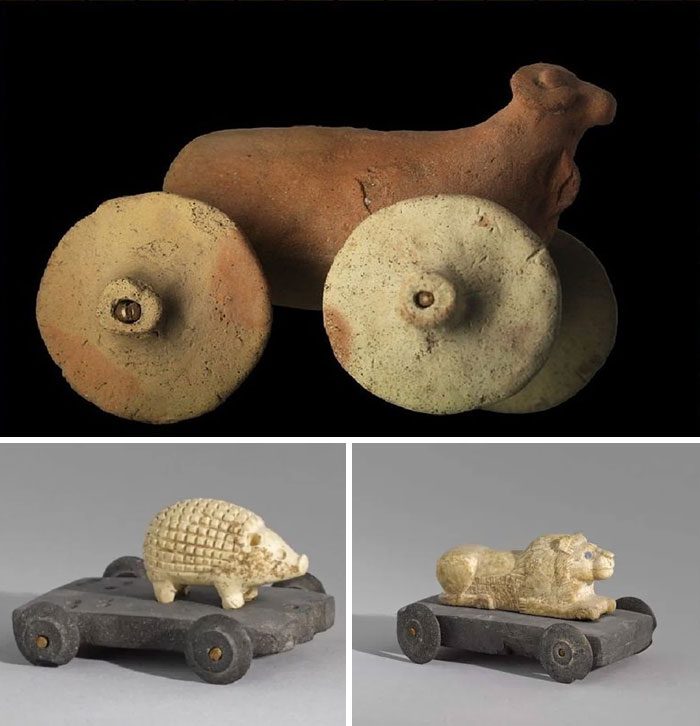
Well, we’d say about 3000 years ago. Yep, these pottery animal and carriage figurines discovered in Iran date back to around 1150 BC. They’re definitely in better shape than our toys! The figurines are on display in Paris’s famous Louvre Museum.
Crypt of San Magno (St. Magnus)
Europe is famous for the many ancient churches and holy places that dot the lands of all of its nations. Be they small or imposing in size, humble or ornate in appearance, weathered or immaculately maintained, they are all fascinating.
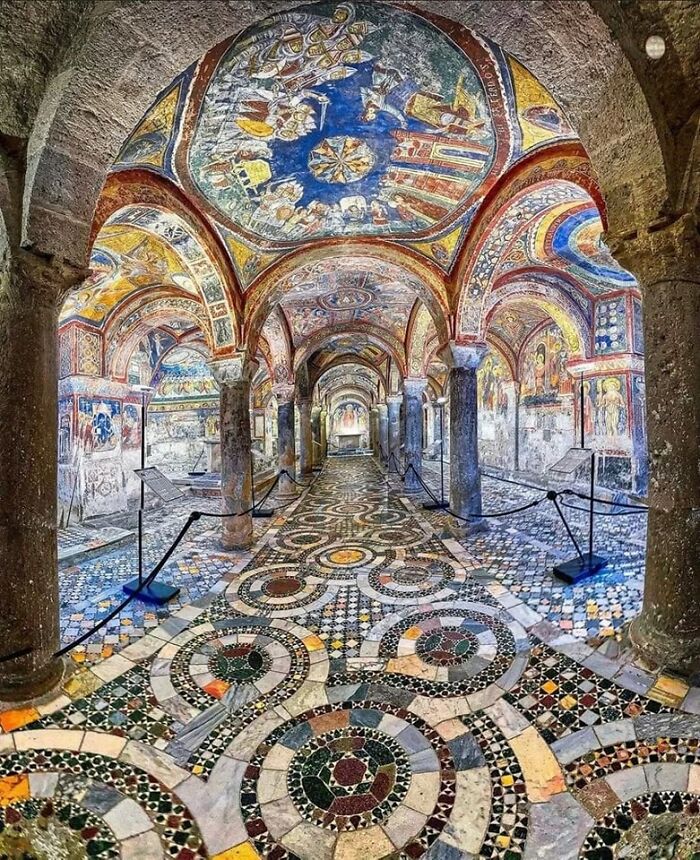
The one pictured above is the Anagni Cathedral in Italy’s Lazio region in the crypt of San Magno. The enchanting mosaic floors and marble-painted ceilings decorate this resting place built in honor of San Magno and many other saints. It’s so enchanting.
The Phuktal Monastery
The fabled and near-mystical Himalayas also have a monastery of their own. And frankly, it has to be one of the most stunning things ever built. Hidden within the district of Zanskar – part of the Ladakh region in Northern India – is the stunning Lungnak Valley.
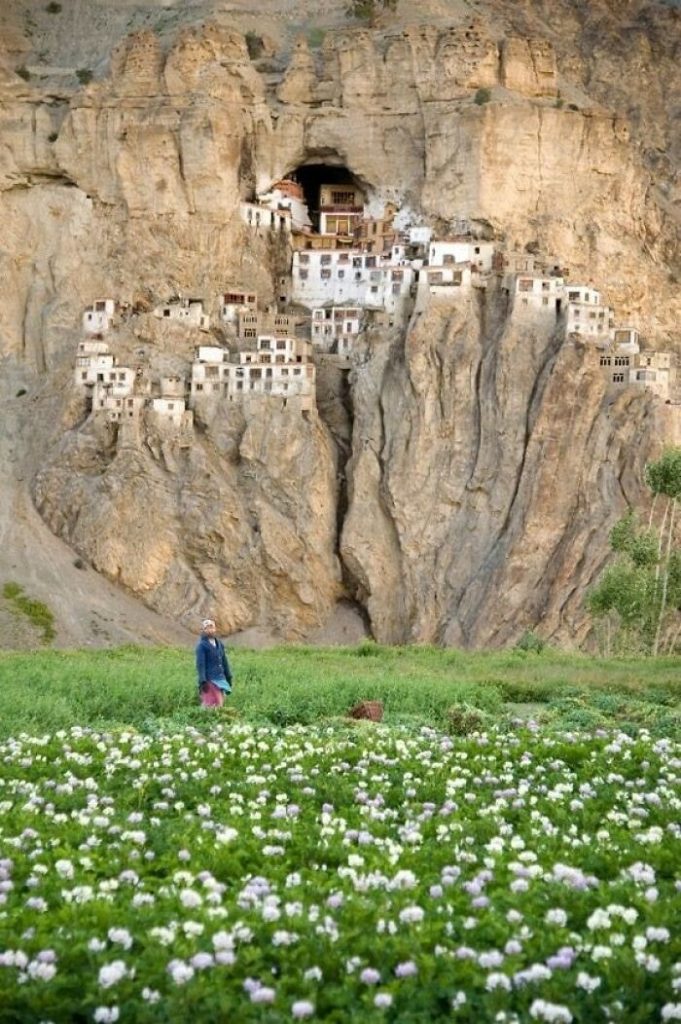
Within this remote location lies the Phuktal Gompa Monastery, a Buddhist monastery that is over 2,500 years old. The monastery is known for housing generations of wise teachers and scholars who, centuries ago, built and carved it into the mouth of the mountain’s cave.
Guernsey’s Little Chapel
We have a feeling that if we played a trivia game focused on geography, no one would know where Guernsey is. Do you? Guernsey – a small island located in the English Channel – is a self-governing dependency of the United Kingdom.

While the island might not be very known, that does not mean it isn’t worth exploring. Its most famous attraction is the Little Chapel. This charmingly ornate building was built by Brother Déodat, who sadly died before it was completed.
Suchindram’s Temple
In the Kanyakumari district of India’s Tamil Nadu state lies the town of Suchindram. While the town is not that well-known – only recently undergoing urbanization – it has one of the most important Hindu temples in the region, the Thanumalayan Temple.
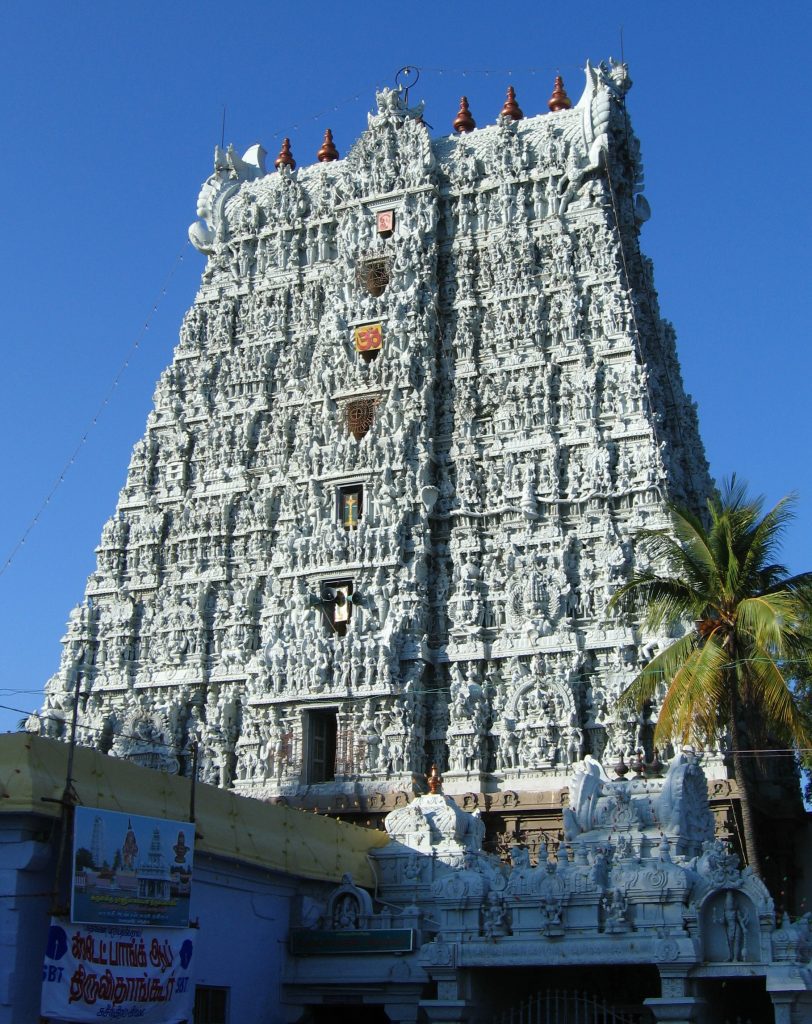
The white structure you are looking at is called a gopura, which is a sort of tower door at the entrance of a temple. This gopura is not only 44 meters high, but it also has tens of thousands of carvings covering it. If marveling at sculptures is your kind of thing, you’d adore this.
Three-Thousand-Year-Old Gold Beaker
Besides its dazzling appearance and fabulous sheen, gold is an expensive and sought-after precious metal due to its durability. That said, we were still shocked when we learned about this 3000-year-old golden beaker currently stored in Tehran’s National Museum of Iran.
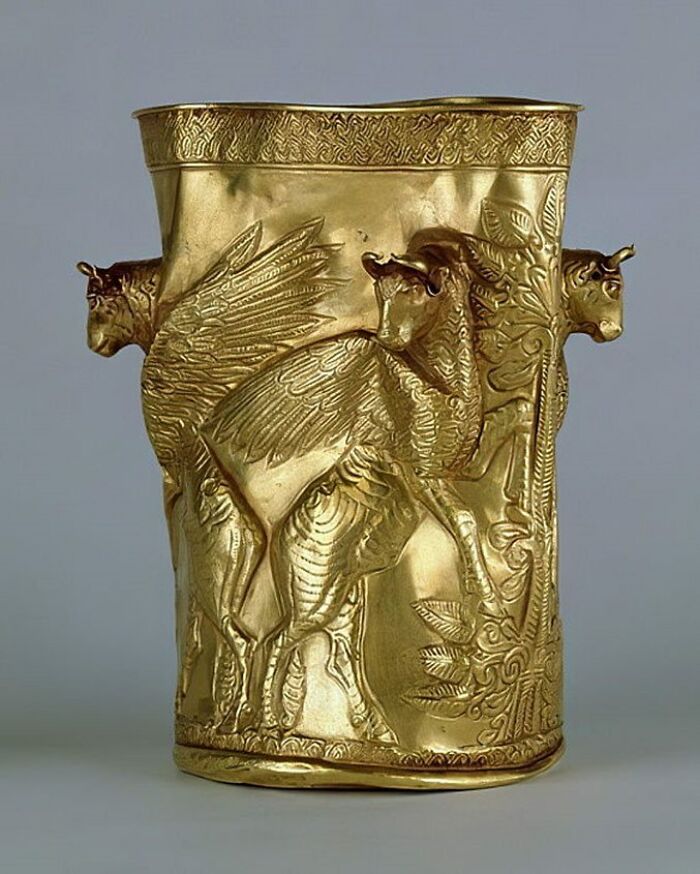
The golden beaker is decorated with winged and horned balls that seem to swirl around leaves. It was excavated in Marlik, an ancient burial site believed to have been a royal cemetery due to the abundance of artifacts found there.
Five-Thousand-Year-Old Dress
And speaking of really old things, this next one takes the cake. What you are looking at is the remains of a dress believed to be over 5,000 years old. Known as the Tarkhan Dress, it was found in the ancient Egyptian necropolis of Tarkhan, South of Cairo.
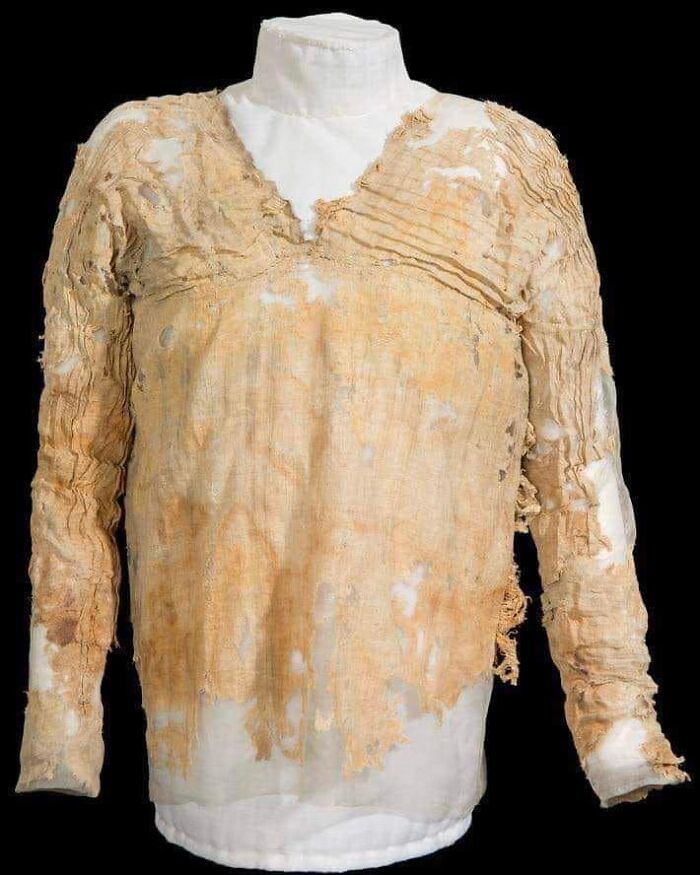
Experts believe the dress was made from linen and would have been worn by a woman, making it the oldest women’s garment in the world. It is currently displayed in the University College London’s Petrie Museum as part of the Egyptian Archaeology collection.
Mehrangarh Fort
Generally, when we in the Western world think of castles, our minds tend to imagine the ones we have often seen across Europe and the Middle East. But these are not the only civilizations that created some truly imposing structures.
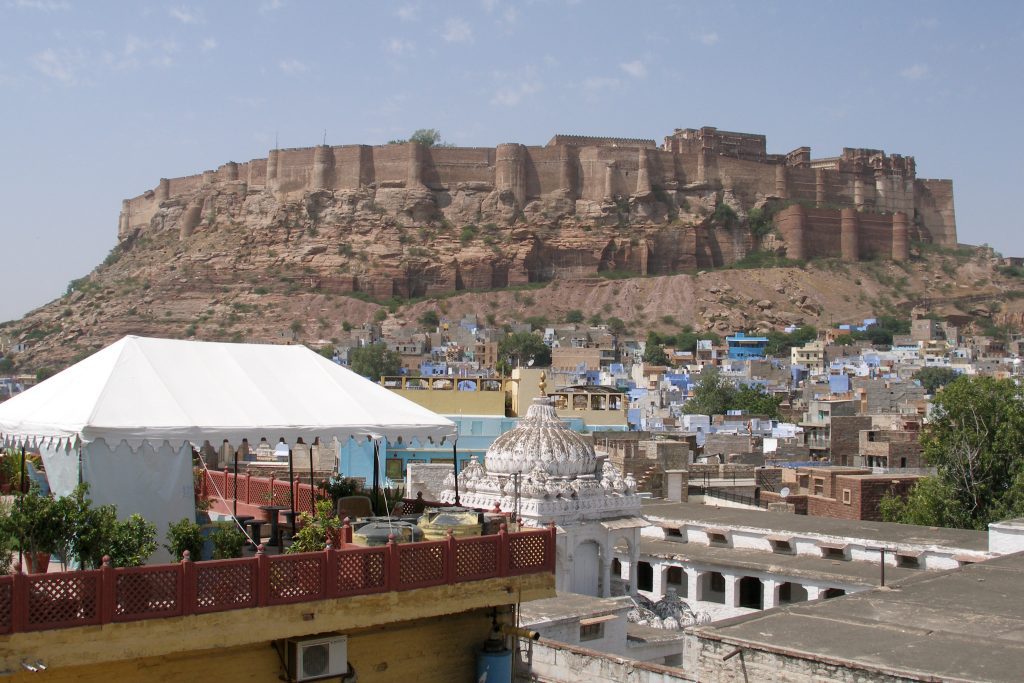
This is the Mehrangarh Fort located in the Indian city of Jodhpur. It’s a colossal structure that covers about 1,200 acres. The fort was made by the Rajput ruler Rao Jodha in 1459. The interior is famous for its numerous palaces and exquisite carvings.
Ancient Stone Bridges
Greece, as most of you know, is world famous for the many ancient ruins and structures that dot its landscape. And while the famous ones are all stunning, they often take the limelight away from more neglected structures, like the Konitsa Bridge.
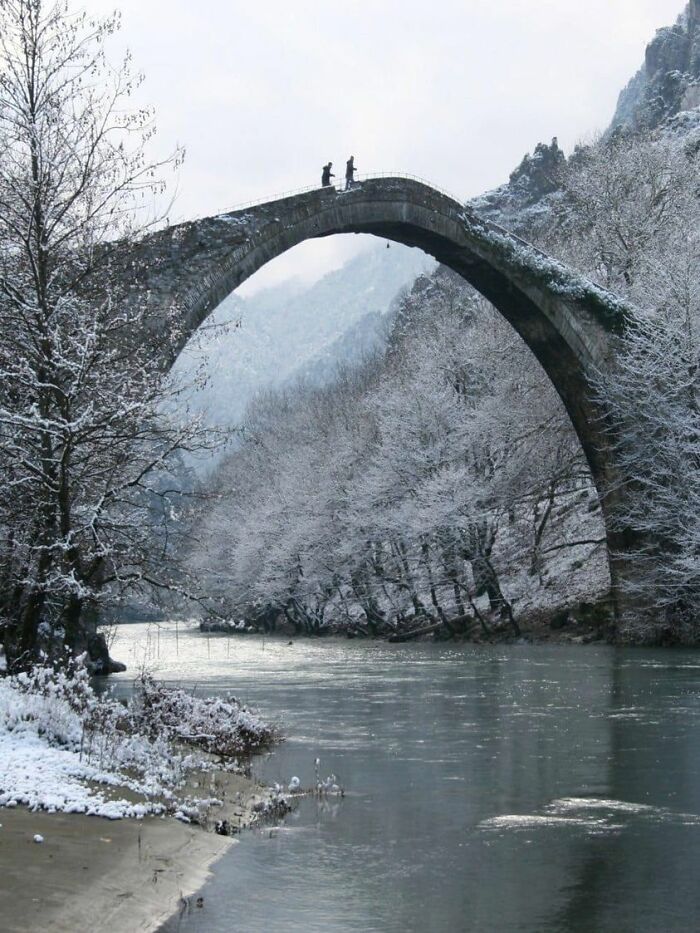
Near the Albanian border and located in Greece’s Epirus region is an ancient and magnificent stone bridge that spans across the Aoös River. The 20-meter-long bridge was apparently made in 1870 by the engineer Ziogas Frontzos, who definitely made it to last.
Ancient Persian Windmills
Though it may appear to be the scaffolding and remains of an abandoned building project at first, this is actually something far more extraordinary. What you are looking at are Persian windmills that are a thousand years old and still working!

Yes, these vertical-axis windmills – as they call them – still operate as well as they did centuries ago. Unfortunately, they are in danger of wasting away as many of the region’s younger generations find them far too labor-intensive to maintain.
Oldest Wedding Bed in Britain
We often find that we just can’t help but think of kings and fancy nobles whenever we’re reading or watching something about the UK. It’s a habit that likely stems from the world’s obsession with the country’s monarchical history and generations of noble families.
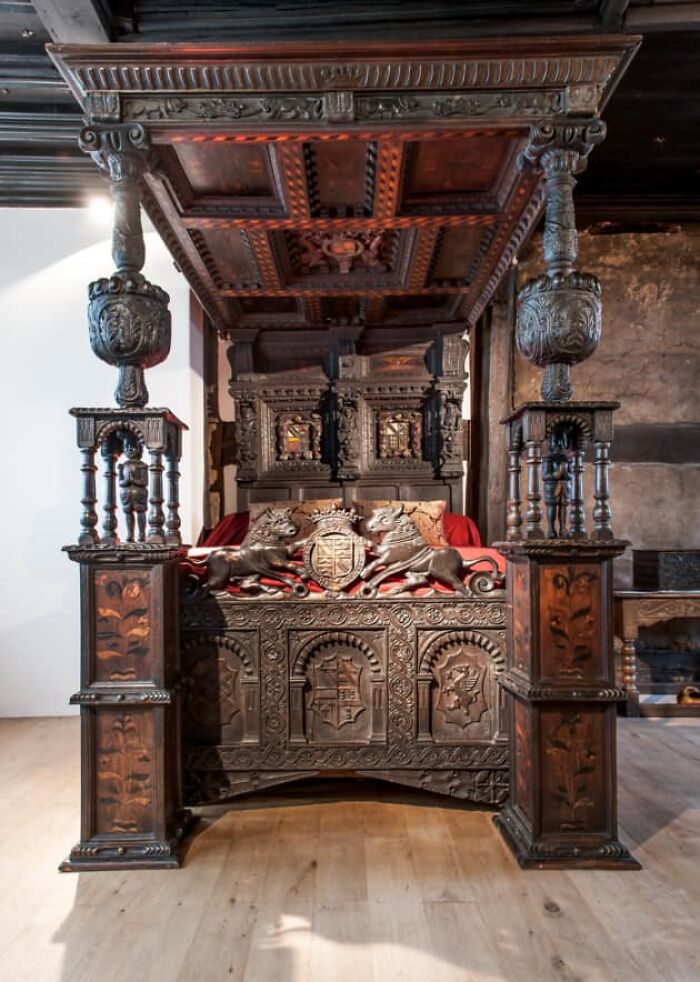
Speaking of which, our next entry is claimed to be the oldest wedding bed in Britain. And yes, it belonged to a noble couple. Dating back to the late 16th century, this imposing bed was apparently lost for hundreds of years, only later reappearing in 2014 at an auction in London.
La Sagrada Familia
This next one is not only interesting thanks to its appearance and history but also because it’s still being constructed. We are, of course, talking about the Basílica I Temple Expiatori de la Sagrada Familia. If you wanna see it, make your way to Barcelona.
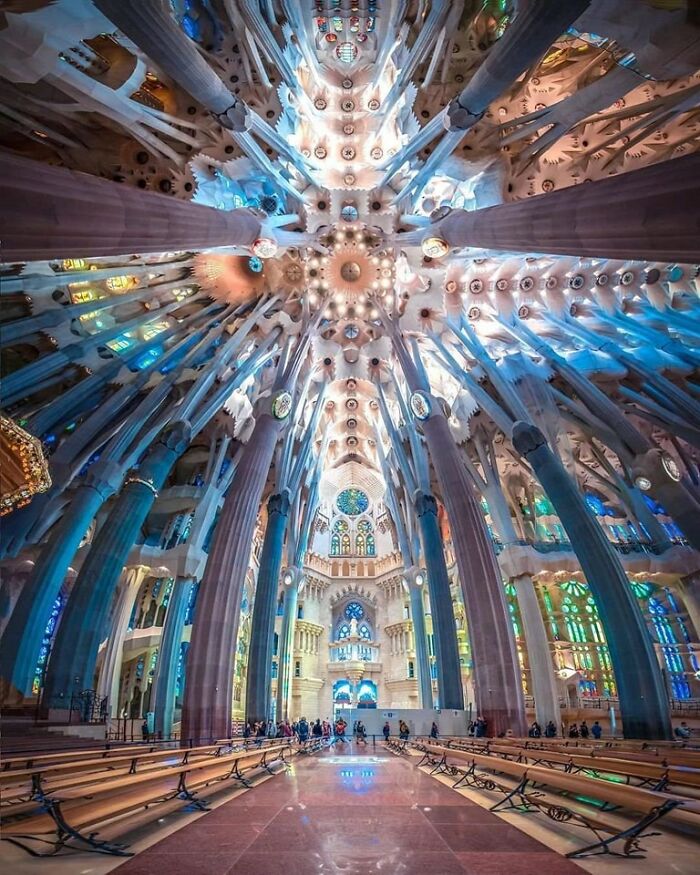
Initially designed by renowned architect Antoni Gaudi, the construction of this iconic and visually breathtaking church began in 1882 and is still ongoing. It is projected that this 172-meter-tall church will be finally completed in 2026, provided things go as planned.
The Roman Pantheon
Not one to be outdone, Rome, the eternal capital city of Italy, is known for its staggering collection of architectural marvels. One of the most iconic, of course, is the Roman Pantheon, a temple originally dedicated to the old Roman gods.
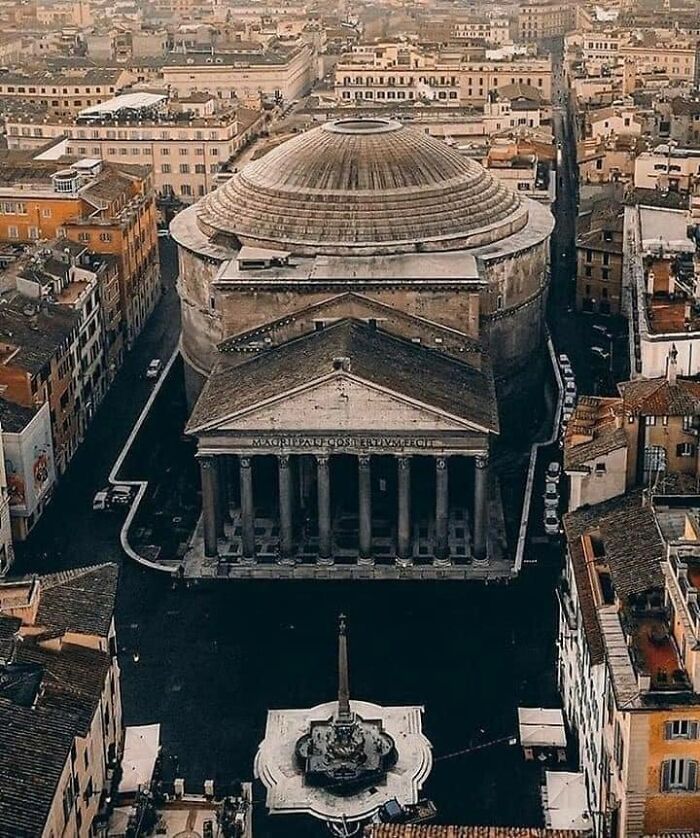
The founding of the temple can roughly be traced back to 31 BC when the renowned Roman statesman and general Marcus Agrippa started its construction. It was later converted into a Catholic church in 609 AD by Pope Boniface IV.
Mysterious Rock Formation
For one a little newer, we have a rather surprising feature located in North West England’s Lake District. The Lake District is a national park known for its mountains, lakes, and coastlines strongly associated with the affectionately named English ‘Lake Poets.’
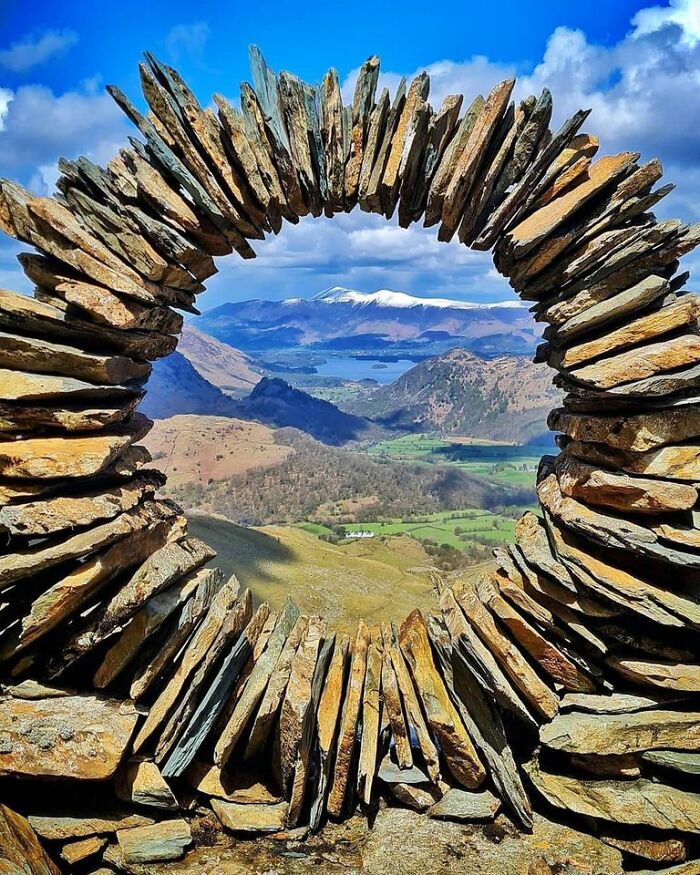
The surprising discovery is an amazing rock formation known as the Borrowdale Banksy. While ‘Banksy’ is in the name, it has nothing to do with it being created by the famous street artist with the same name since it is still unclear who made it.
Mayan Pyramid in Tikal
Continuing on the theme of global temples, let’s take a stroll over to Central America. This part of the world is perhaps most famous for the ancient civilizations that once ruled over it. Civilizations that still live on through their surviving structures.
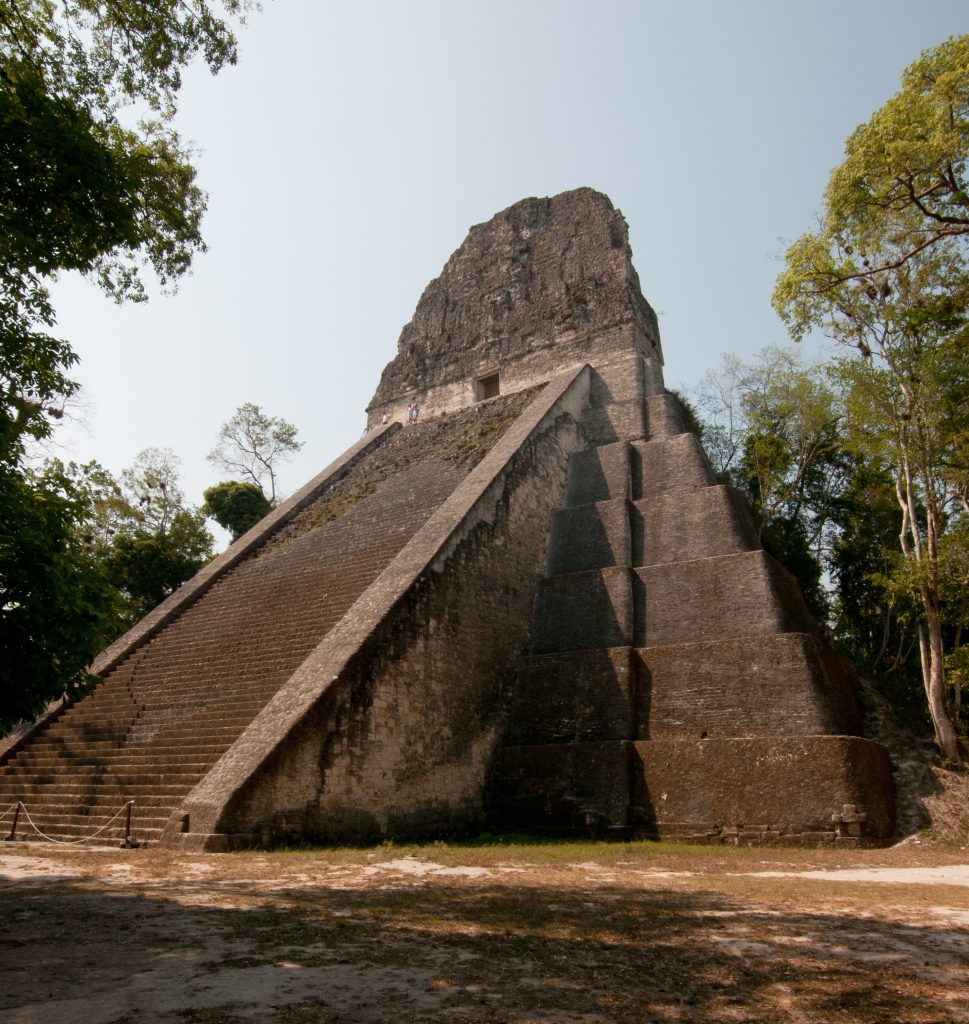
A fine example is the Mayan Empire, which is famous for its brilliant astrological knowledge and building expertise. This is an ancient Mayan temple found in the ruins of Tikal, a capital city found deep in the rainforests of Guatemala.
Minoan Gold Ring with Lapis Lazuli:
When it comes to the history and kingdoms of ancient Greece, Athens, Sparta, and Macedonia tend to take all the attention. A negative effect of this fame is that we often neglect the lesser-known yet fascinating Greek civilizations of the period.
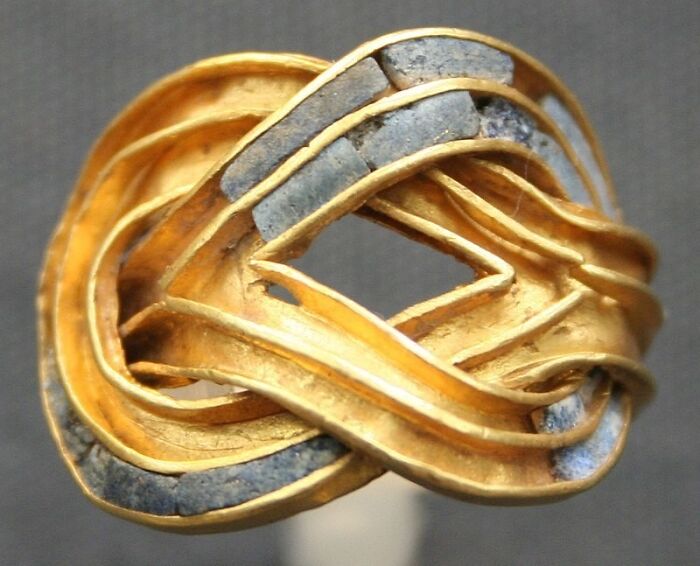
The island of Crete was once inhabited by the Minoans. A civilization that largely collapsed around 1100 BC but is still regarded as one of the most advanced cultures of the time. A fact exemplified by this gorgeous ring made of gold and lapis lazuli.
Etruscan Bronze Armour
Speaking of lesser-known ancient cultures, the same could definitely be said about the Etruscans. Ancient Italy was not always solely ruled over by the Romans, as they were once at war with the Etruscans, a federation of city-states from 900-27 BC.
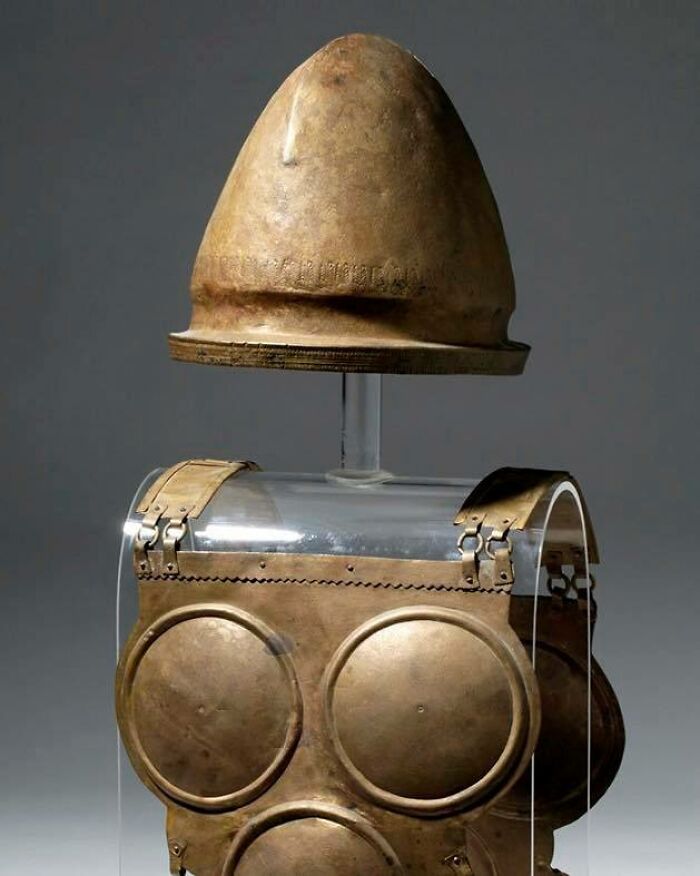
The Etruscans are among the oldest recorded civilizations and were known for their mysterious culture and writing system. Though they were gradually defeated and assimilated by the Romans, they definitely put up a fight, as evident by this surviving suit of bronze armor.
Floor Mosaic at Roman Bathhouse:
While we are still talking about the Romans. Though those guys – and most civilizations of the time – didn’t have the best knowledge of hygiene, they sure did love their bathhouses, as is evidenced by this 2nd-century bathhouse in the ancient city of Timgad in Algeria.
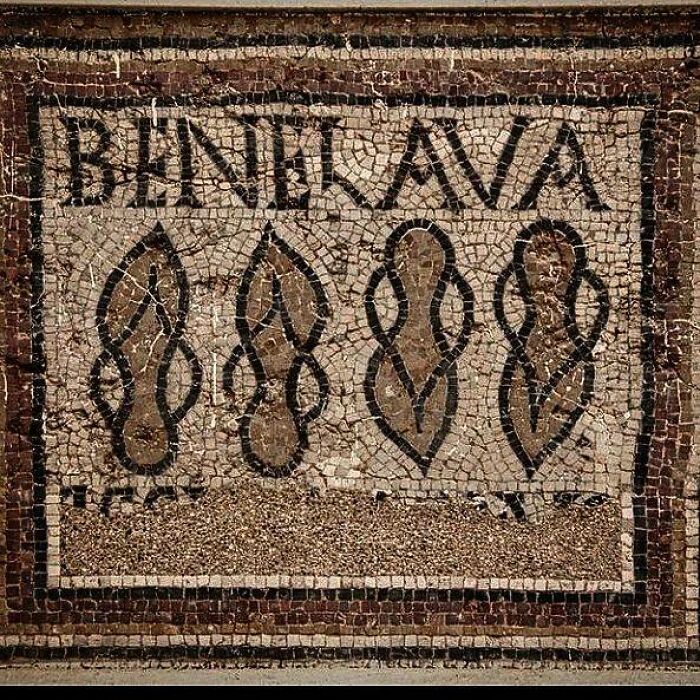
The Romans were known for their fondness of writing mosaic messages at the entrances of buildings. This mosaic’s message – complete with little slipper images – in front of the bathhouse reads, ‘Bene lava,’ which roughly translates to, ‘Wash well.’
Akkadian Cuneiform Tablet:
When it comes to unraveling the mysteries of the past, the Akkadian cuneiforms have been making historians, archaeologists, and linguists scratch their heads for decades. Before we get started, cuneiform is a form of logo-syllabic script whose concept is almost similar to hieroglyphics.
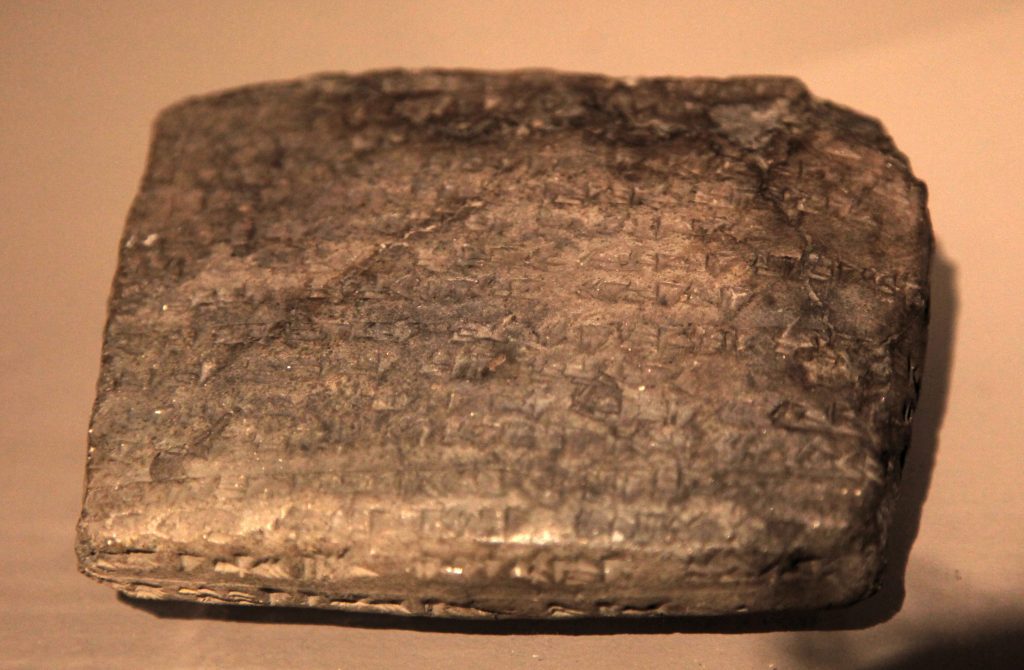
The Akkadians were an ancient people from Mesopotamia that existed between 2500-500 BC. Their cuneiform tablets are, therefore, some of the earliest records of written language, documenting early forms of the East Semitic language. This tablet is believed to be from 1750 BC.
The Remains of a Bronze Age House
Situated Southwards of Greece’s capital in the middle of the Aegean Sea is the volcanic island of Santorini. This city was once home to the Akrotiri, a Bronze Age settlement that was destroyed in the 16th century BC by volcanic eruptions and earthquakes.
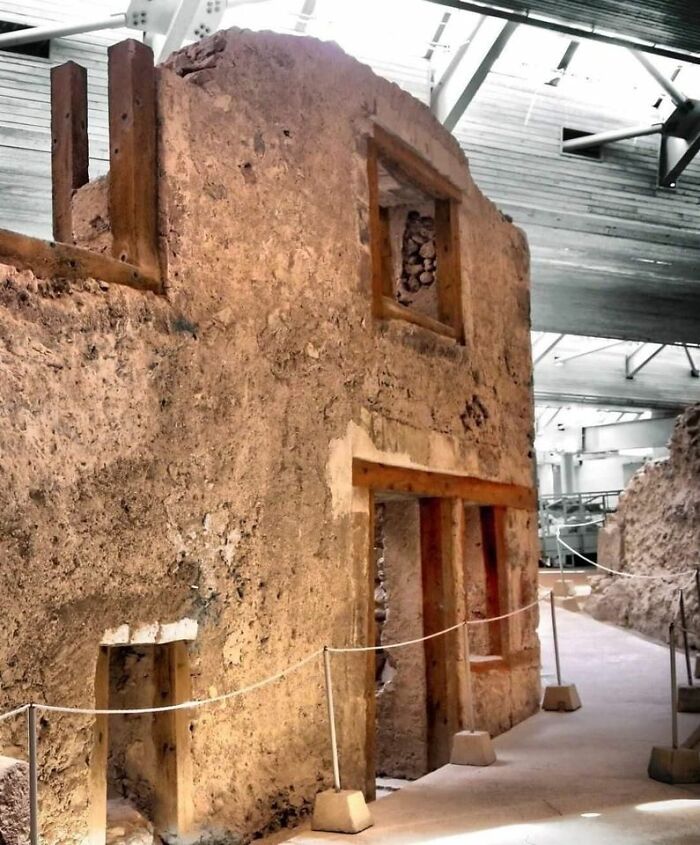
While much of the modern city of Santorini – Thira in Greek – was built over the ruins, some structures survived. For example, these remains of what might have been a house that survived the catastrophe are now protected in an archaeological site.
The Throne of a Greek Queen
While most of the world has most likely heard of Alexander the Great, how much do we actually know about his ancestors? Well, this ancient-looking seat was actually the marble throne of his grandmother, Queen Eurydice I of Macedon. That’s something, right?
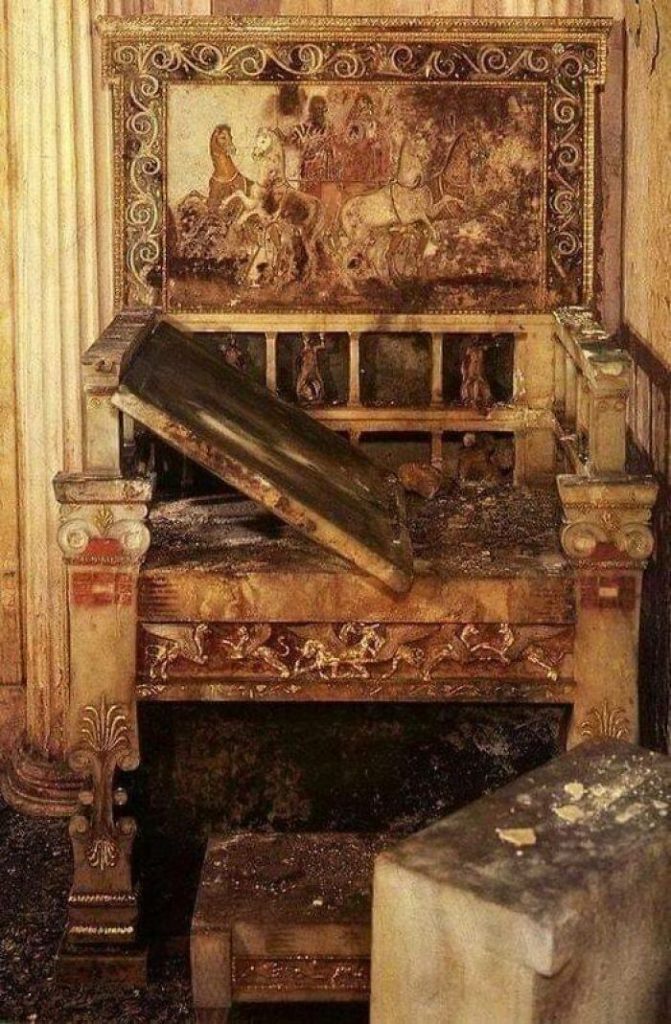
Alexander being her grandson is not the only reason why she is worth remembering. Eurydice was also a formidable political adversary, known for her leadership abilities and reasoning and for bringing about a turning point of sorts in Macedonian history and politics.
Surviving Statue of a Roman Emperor
When it comes to the Roman emperors, there’s really no telling what to expect. Some are remembered as formidable generals, others as shrewd statesmen, and others as ruthless tyrants or insane. Well, this statue is, fortunately, one that’s remembered fondly.
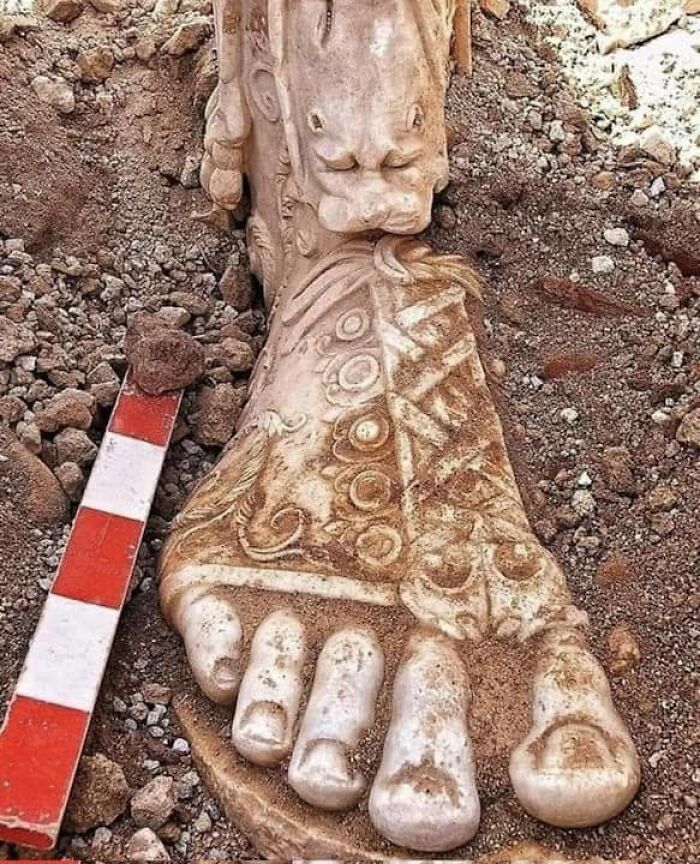
This marbled foot that was uncovered in southern Turkey belongs to a sculpture of one of Rome’s greatest emperors, Marcus Aurelius. He is often venerated as a learned king who loved Philosophy and had a temperament majorly influenced by Stoicism.
The Cliff Castle Between England and Wales
On the border between Wales and England stands an impressive castle that was built in the 11th century. Chepstow Castle – or Castell Cas-Gwent in Welsh – was constructed under the order of Lord William FitzOsbern, a companion of the Norman king, William the Conqueror.
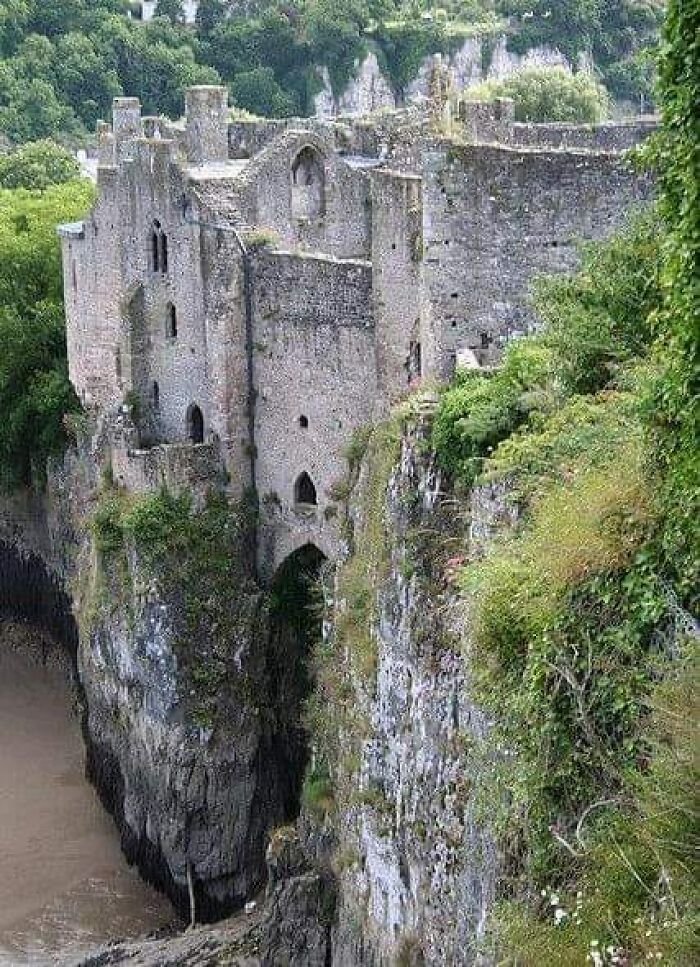
The castle was built over a strategically important area and served as a deterrent against the Welsh kingdoms, who were still independent of William’s English rule. While the castle was not the most defensible, it is regarded as the oldest post-Roman castle in Britain.
Ancient Mosaic in Turkey
As we have already mentioned, Anatolia was a favored region of the Greeks, Romans, Persians, and Armenian kingdoms. Well, basically a strategic region for anyone trying to control the Bosporus Strait. It is also the location of another incredible mosaic.
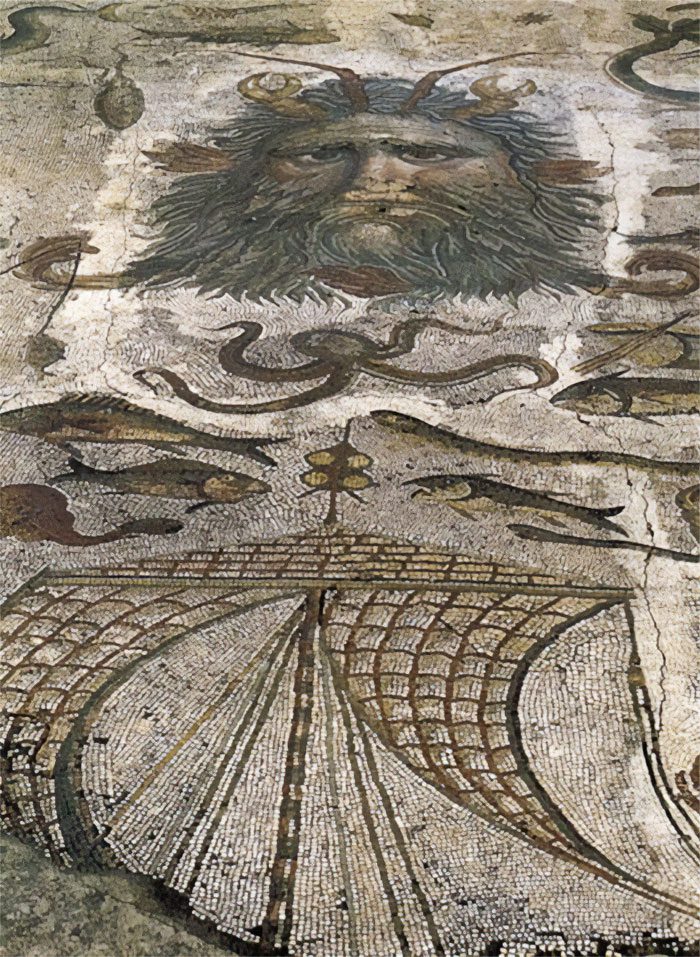
Archaeologists uncovered this detailed masterpiece in what was the ancient Greek – later Roman – city of Hadrianopolis in Paphlagonia. The city is near the present-day Turkish town of Eskipazar in the Karabük Province. It’s believed that the mosaic is of the Greek god Poseidon.
Macedonian Helmet and Gold Burial Mask:
Let’s travel back over the Aegean Sea to the old Greek city of Thessaloniki. This was the second-largest city in the country and one of the most important towns in the region for centuries. Additionally, it was a metropolis that witnessed numerous battles and sieges.

Archaeologists found the burial location of a warrior who died in one of these battles. What made this discovery particularly interesting was that it gave us a glimpse of the civilization’s funeral customs of pressing a golden sheet to the face of the deceased.
The Terrace of the Lions
Situated in the South Aegean Sea and near the ever-popular island destination of Mykonos is the tiny island of Delos. But while the island may be small, it was one of the most important and spiritual sites in Greek mythology.

This UNESCO Heritage Site is an archaeologist’s dream, thanks to the dozens of monuments and ruins that cover the island, like the captivating Terrace of the Lions, a shire that was dedicated to the god Apollo around 600 BC by the inhabitants of Naxos.
Ancient Japanese Warrior Helmet
The popular reputation of Japan as an extremely desirable and safe travel destination is a strong contrast to its past. That said, feudal Japan is also a source of endless fascination due to the numerous wars and battles that were waged across the island.
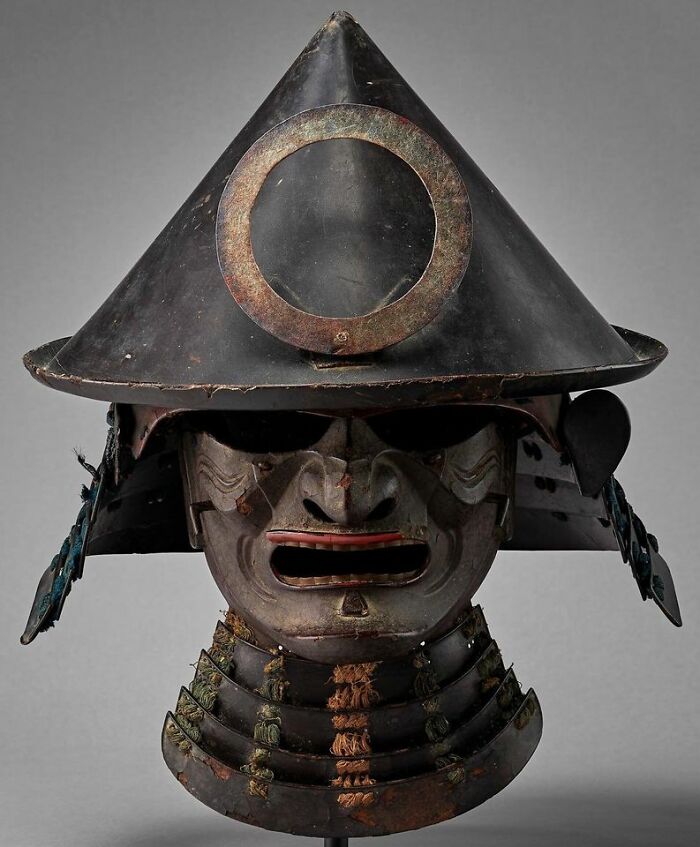
When it comes to naming iconic things about Japan, it’s almost impossible not to think about the samurai. While their katanas are the most iconic thing about them, they also had incredible and frightening armor and helmet designs, like this one from the 17th century.
Medieval Stone Bridge in Lincoln
Ordinarily, when you come across a waterway that cuts through a city, you expect to find a bridge nearby that, well, bridges the gap. And while that might seem like something obvious, it isn’t the case for the English city of Lincoln.
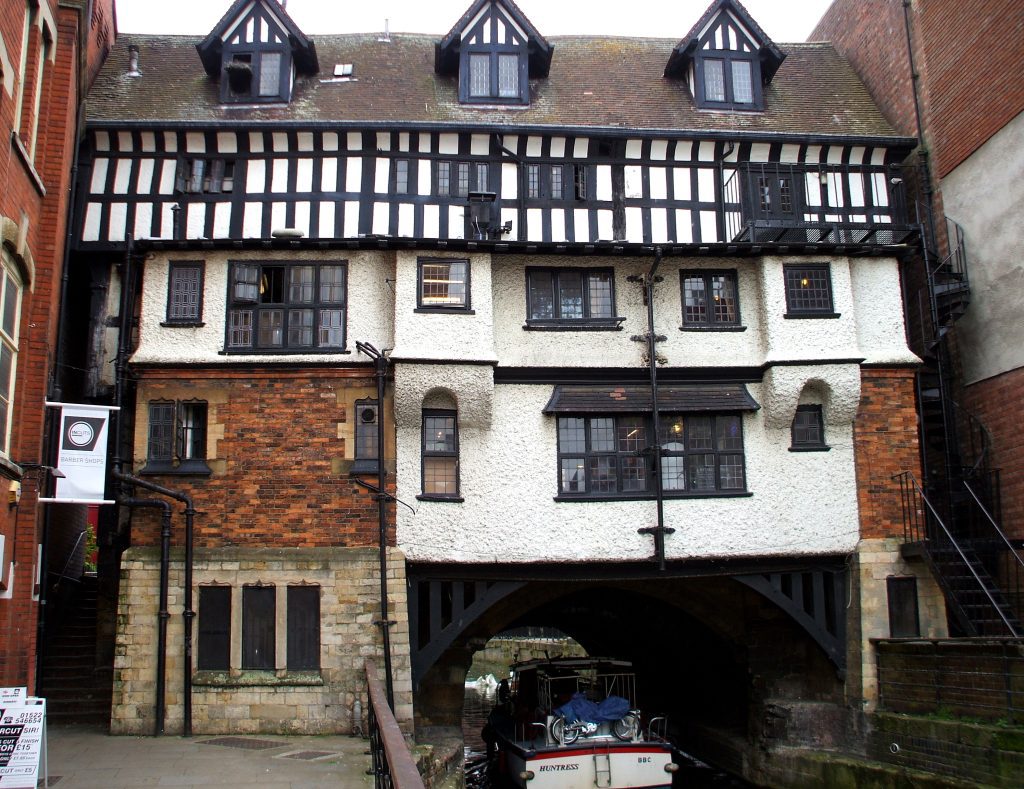
Lincoln’s High Bridge stands above River Witham and was built in 1160. It is believed to be the oldest bridge in the UK. What makes it unique is that it’s a bridge with a series of small shops built on top, a feature that was reportedly common in the Middle Ages.
Church of Santo Domingo in Puebla
In the Mexican city of Puebla de Zaragoza, you will find the charming and captivating Convent Church of Santo Domingo de Guzmán, a Roman Catholic church. And while the outside might not appear to be all that, the interior sure is.
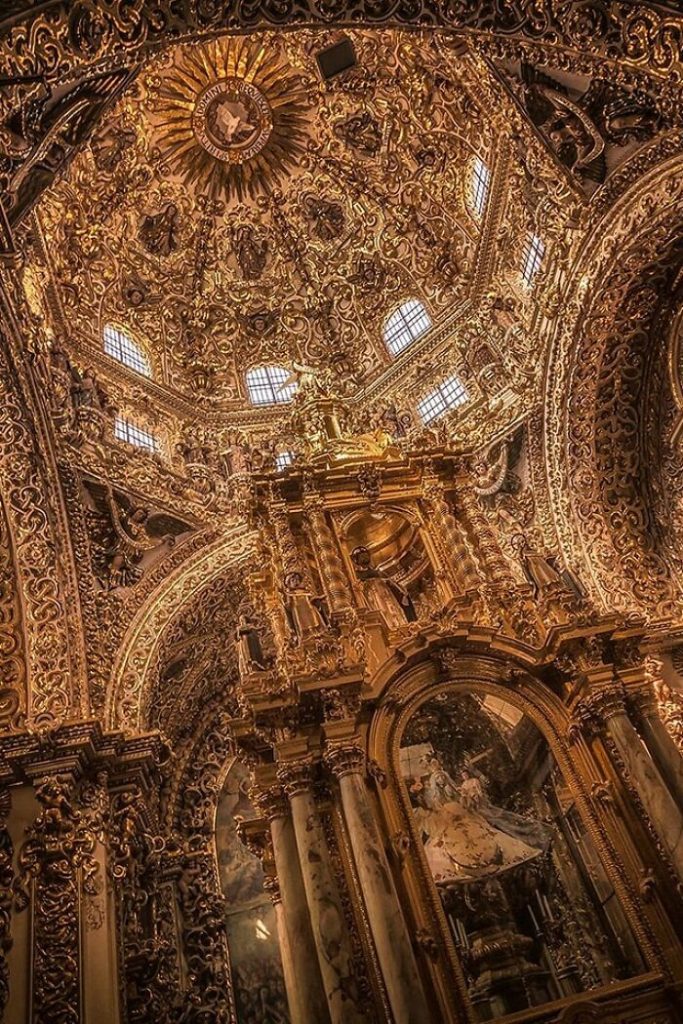
Located inside the church is the Chapel of the Virgen del Rosario, a UNESCO Heritage site. This incredibly detailed chapel was once regarded as the Eighth Wonder of the World, mainly because of its incredible New Spanish Baroque decorated interior.
Predjama Castle
Situated in the small village of Predjama in Slovenia is Predjama Castle. Built into the mouth of a cave in 1274, the castle has an interesting past. It is believed that it was originally built in the Gothic style by the Patriarch of Aquileia.
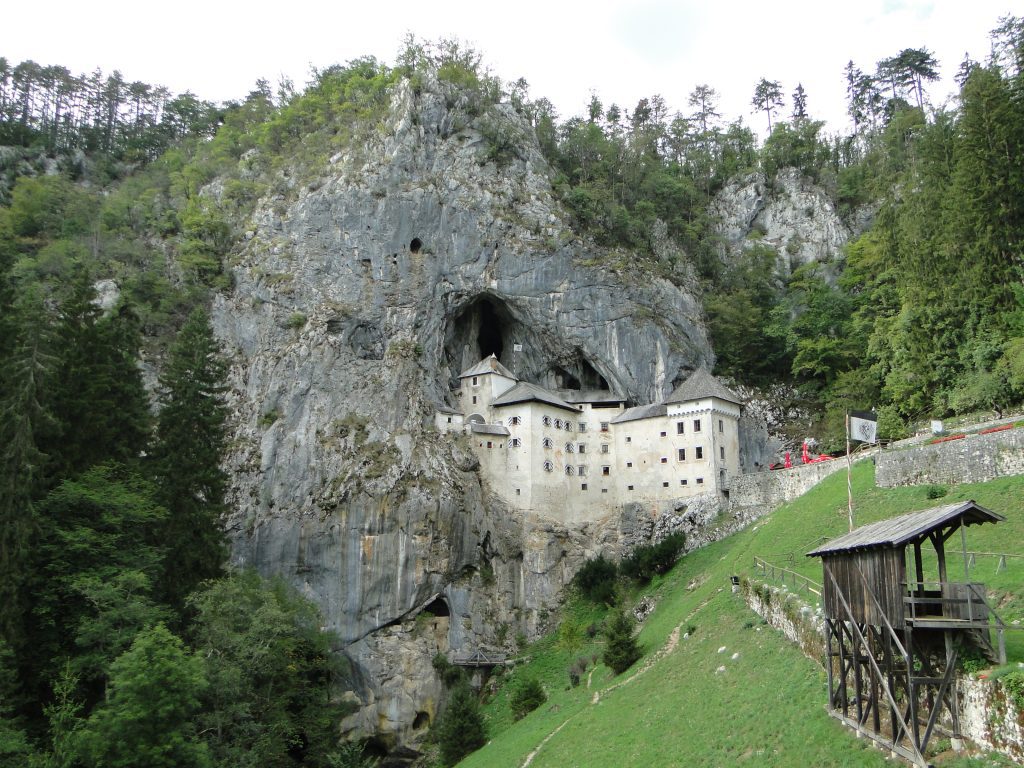
The castle was later bought by the Luegg noble family, eventually becoming the seat of Erasmus of Luegg. Unfortunately, much of it was damaged after Luegg provoked the Habsburgs, who later overtook it and rebuilt it in the Renaissance style.
Fonseca Bust
Though the empire of the Romans may have fallen into ruin long ago, the magnitude of their legacy lives on in the relics they left behind. One of the most famous examples of this is the many exquisite marble sculptures and busts that have survived.
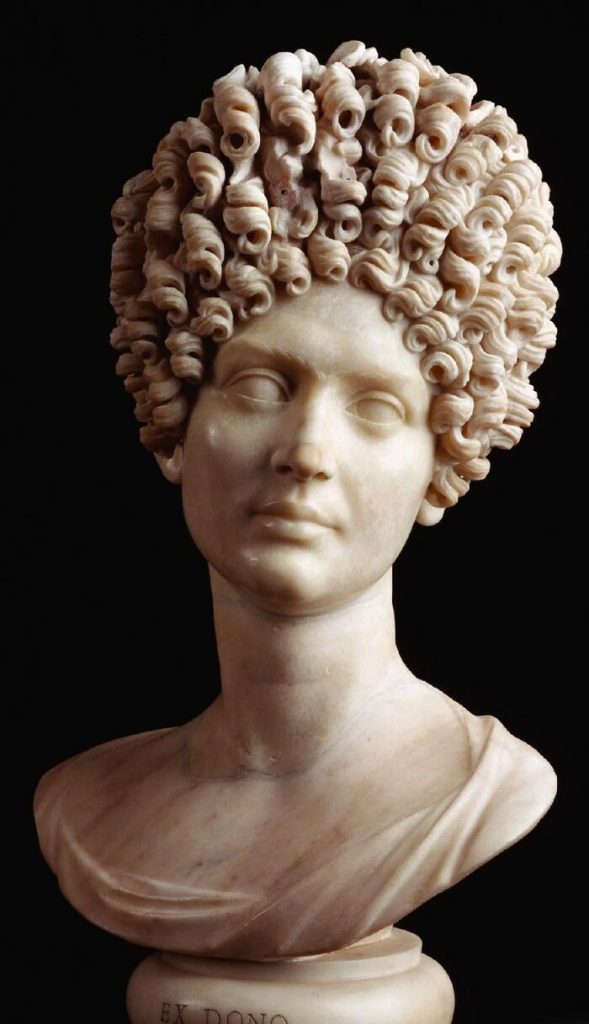
Some of these sculptures are well-documented and easily identifiable. However, some of them, like this Bust of a Flavian Woman – also called the Fonseca Bust, named after a previous owner have histories that are sadly lost to our time.
Ancient Mayan Ceramic Figurines:
Located in Guatemala’s Petén department (similar to a region, province, state, etc.) is the Mayan archaeological site, El Perú – also known as Waka’. The site has been home to numerous uncovered pre-European Mayan artifacts, such as this miniature 1,500-year-old ceramic figurine.
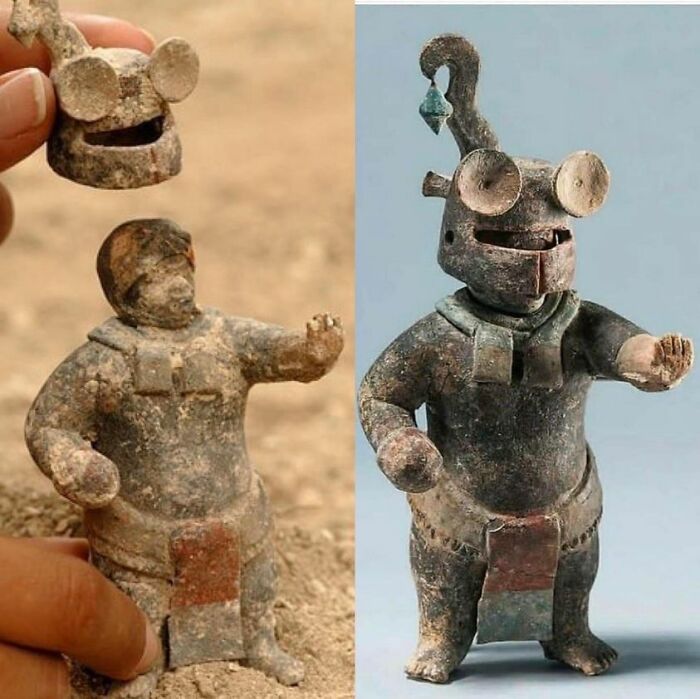
If the level of detail of this figurine was not impressive enough, its rather bizarre-looking helmet is actually removable. Unfortunately, we do not know much about the figurine or what it represented. But either way, it’s amazing that it has survived all this time.
1000-Year-Old Indian Stonework
Speaking of craftsmanship, this stone statue in India is truly incredible in its own right. Located in the Bhu Varaha Swamy temple in India’s southern state of Tamil Nadu, the over 1000-year-old statue is certainly impressive. The detail of the braid alone is unbelievable.
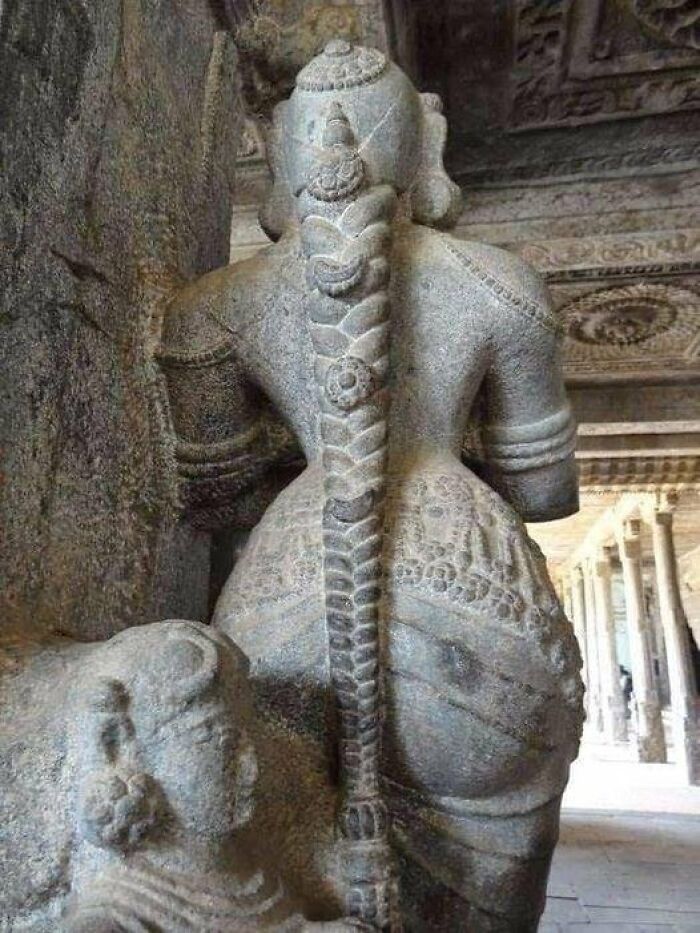
This temple it belongs to is said to have been crafted and designed in the South Indian architectural style, also called Dravidian architecture. Additionally, the site is said to be dedicated to Varaha, the boar-shaped avatar of the god Vishnu.
2000 Terracotta Statues:
We wouldn’t blame you if China’s famous terracotta warriors were the first thing that came to mind when you read the word ‘terracotta.’ And while China’s figures might be the most famous, they aren’t the only ones in existence. Introducing the Cypriot terracotta warriors.

The island of Cyprus was known for its craftsmanship and pottery, a trait exemplified by these figures. It is said that these were made anywhere between 1050-310 BC. Archaeologists believe the figures were a form of offering dedicated to the altar they surrounded.
The Ruins of Chateau de Puilaurens:
Staring down from the high mountains of the Boulzane Valley are the remains of the Chateau de Puilaurens. You can spot this imposing castle in the commune of Lapradelle-Puilaurens in the southern French region of Occitania, which is the former region of Languedoc-Roussillon.
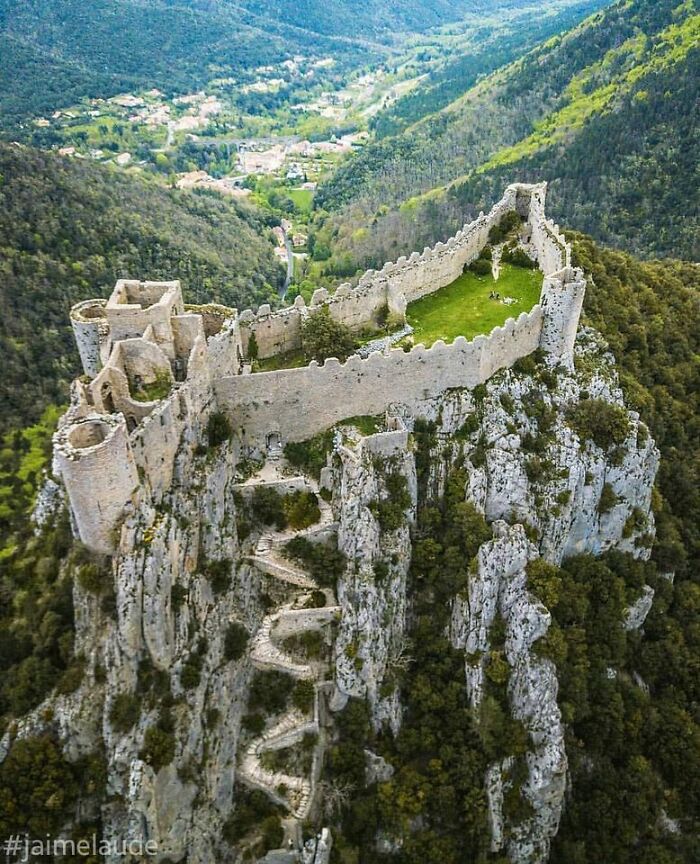
The history of this castle is a bit complicated. That said, we know it was constructed in the 13th century and is counted among the ‘Cathar Castles,’ a strongly contested term. Additionally, it was allegedly built to defend against the neighboring Kingdom of Aragon.
Siena Cathedral
In the charming and culturally-rich city of Siena in Italy’s Tuscany region, you will find the Siena Cathedral. Built in the 13th century, the cathedral later became the seat of the Diocese of Siena in the 16th century, which is presently the Archdiocese of Tuscany.
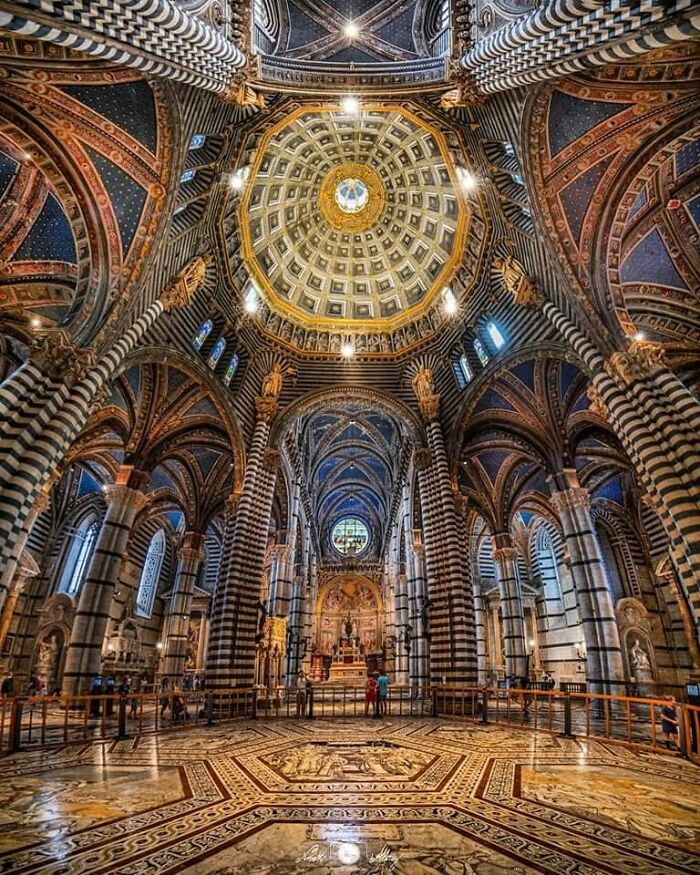
The cathedral is known for its grand size, intricate details, and numerous statues created by some of the most skilled artists of the time. It should come as no surprise that the interior is even more astounding than the exterior.
Terrace Houses of Ephesus:
Journey with us to the westward-facing coastline of Anatolia, where you will find the ruins of the ancient city of Ephesus. Back in the 10th century BC the region was home to Ionian Greeks, who developed the area before falling under Roman occupation in 129 BC.
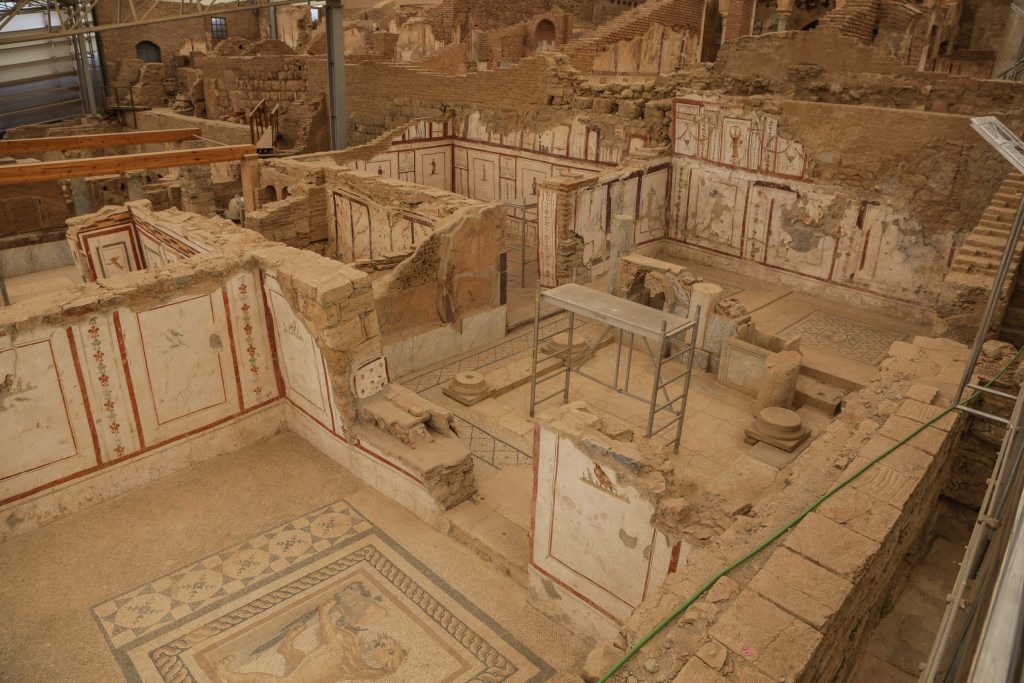
The ruined city is known for many architectural wonders, but what we really want to shed some light on are the remains of its terrace houses. Though much of them may be gone, the mosaic floors and fractured walls give us a glimpse of what they looked like.
